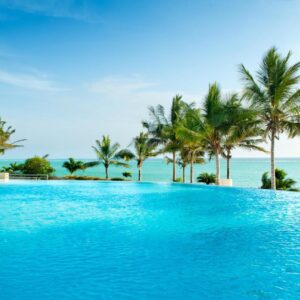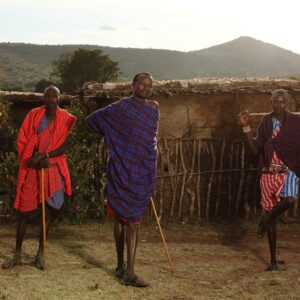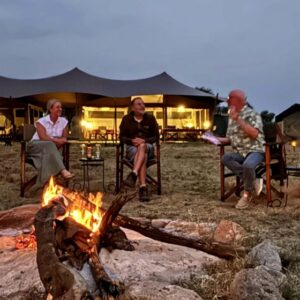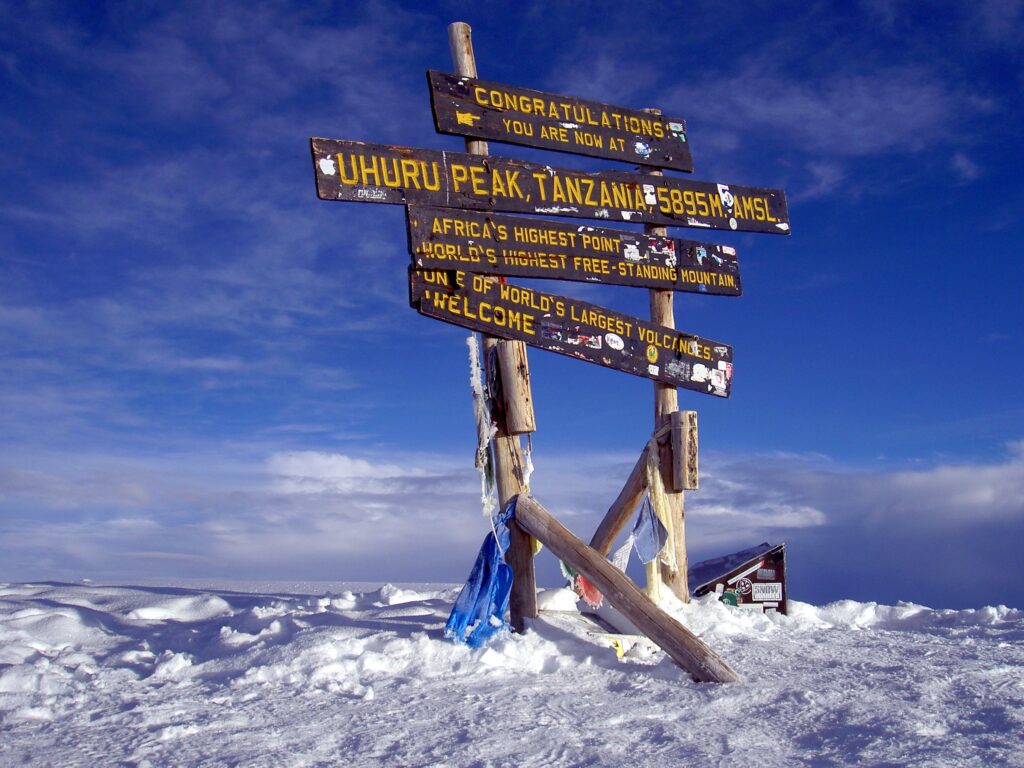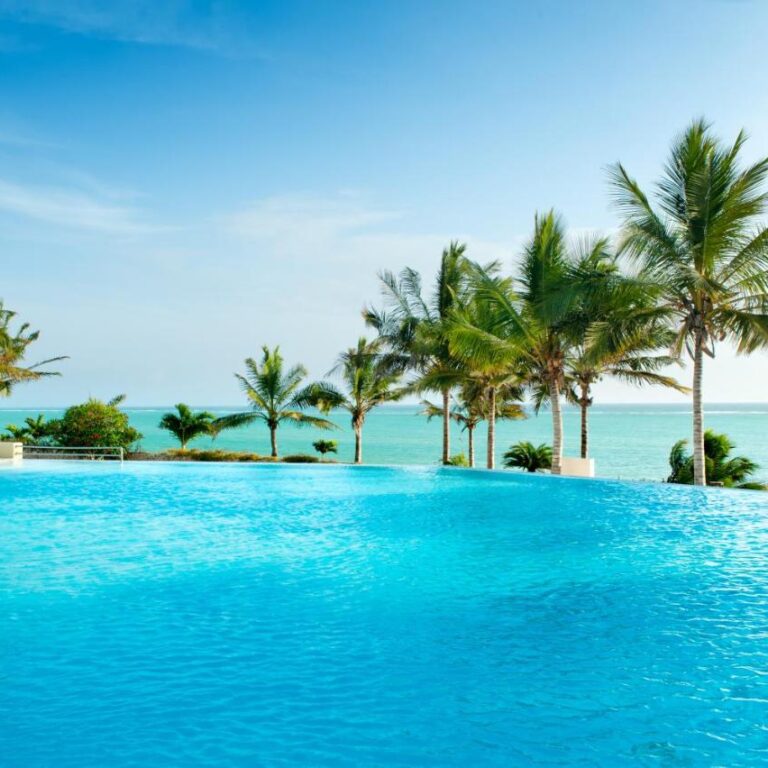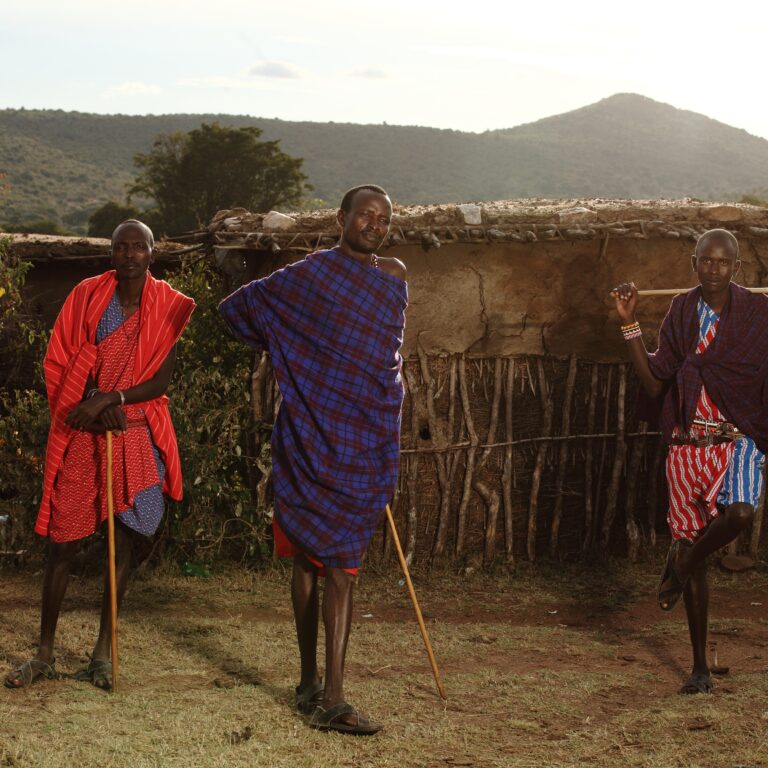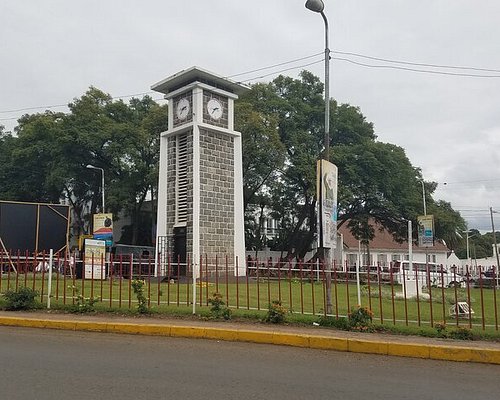Neither Mount Kenya nor Mount Kilimanjaro is inherently “better”; the choice depends on your hiking goals, as Kilimanjaro is Africa’s highest peak and a more predictable, though challenging, trek, while Mount Kenya offers a more adventurous, rugged experience with its technical summits, though its popular Point Lenana peak is more accessible. If you prioritize a straightforward but demanding summit for the title of “Roof of Africa,” choose Kilimanjaro. If you prefer diverse terrain, a more tranquil experience, and a greater mountaineering challenge, especially if you’re interested in technical climbing on the main summits, Mount Kenya is a better choice.
Choosing between Mount Kenya and Mount Kilimanjaro for a climbing adventure is a tough decision for many hikers. Both mountains offer unique and challenging experiences, but they differ significantly in their characteristics, climbing routes, and overall atmosphere. This guide will compare these two iconic African peaks to help you decide which one the right fit for your next expedition.
Location and Mountain Profile
Mount Kilimanjaro, Africa’s highest peak, is located in Tanzania, near the town of Moshi. It’s a dormant stratovolcano with three distinct volcanic cones: Kibo (the highest), Mawenzi, and Shira. Its iconic, snow-capped summit rises dramatically from the surrounding plains, making it a prominent and easily recognizable landmark. Is Mount Kilimanjaro in Kenya or Tanzania? Mount Kilimanjaro is located entirely within Tanzania, though it is near the border with Kenya. The mountain located in the northeastern part of Tanzania and entirely contained within Tanzania’s Kilimanjaro National Park.
Mount Kenya, Africa’s second-highest peak, its situated in Kenya, just south of the equator. Unlike Kilimanjaro’s single, dominant peak, Mount Kenya is a complex massif with multiple jagged peaks and glaciers. The highest points, Batian and Nelion, are technical climbs, while Point Lenana, the third-highest, is the trekking summit accessible to non-climbers.
Elevation and Difficulty
Kilimanjaro’s summit, Uhuru Peak, stands at an impressive 5,895 meters (19,341 feet). It’s often referred to as the “Roof of Africa.” The climb to the summit is a strenuous hike, but it doesn’t require any technical mountaineering skills, making it accessible to anyone with good fitness and determination. The main challenge is the high altitude, which can cause altitude sickness.
Mount Kenya’s highest trekking peak, Point Lenana, is at 4,985 meters (16,355 feet). While this is lower than Kilimanjaro, the routes to Point Lenana can be more technically demanding than Kilimanjaro’s standard routes. Some routes involve scrambling and using hands for support, and the summit climb often done in the dark over rocky, icy terrain. The true summit peaks of Batian (5,199 meters) and Nelion (5,188 meters) highly technical climbs reserved for experienced mountaineers.
Climate and Weather
Kilimanjaro’s climate is highly varied due to its immense altitude. The lower slopes are a lush rainforest, transitioning to moorland, alpine desert, and finally an arctic-like summit. Temperatures can range from tropical at the base to well below freezing at the top. The weather can change rapidly, with rain, sleet, or snow possible at any time of year.
Mount Kenya also features a similar range of climate zones. The lower slopes are home to a dense forest, leading to a heath and moorland zone, and finally the rocky, glacial alpine zone. The mountain’s proximity to the equator results in a consistent but distinct wet and dry season. The summit can be extremely cold, with temperatures often dropping below freezing at night.
Mount Kenya vs Kilimanjaro Flora and Fauna
Both mountains are home to a remarkable diversity of plant and animal life. Kilimanjaro’s slopes are a sanctuary for a variety of animals, though they are less frequently seen on the popular trekking routes. You might spot colobus monkeys, elephants, and buffalo in the lower rainforests, but sightings are rare. The mountain is most known for its unique plants, such as the giant lobelias and groundsel trees, which thrive in the alpine zones.
Mount Kenya, with its less-trafficked routes, offers a better chance of spotting wildlife. The lower slopes are home to elephants, buffalo, antelopes, and various primates. The unique flora of Mount Kenya includes giant groundsel and lobelia, which are prominent features of the high-altitude landscape.
Trekking Conditions and Peak Seasons
The dry seasons are the best times to climb both mountains. For Kilimanjaro, this is typically from late June to October and from late December to February. These periods offer clearer skies, less rainfall, and better trail conditions. The shoulder seasons (March, April, November) can be a bit wetter and less crowded.
Mount Kenya’s peak seasons are from January to March and from July to October. The trails are drier and more accessible during these months. The long rainy season, from March to June, and the short rainy season in November and December, make climbing more challenging due to muddy trails and reduced visibility.
Routes and Duration
Kilimanjaro has several well-established routes. The Machame Route, often called the “Whiskey Route,” is popular and takes 6-7 days. The Lemosho Route is longer (7-8 days), but its gradual ascent and stunning scenery give it a higher summit success rate. The Marangu Route, or “Coca-Cola Route,” is the oldest and most direct, but its shorter duration and lack of acclimatization often lead to lower success rates. The Rongai Route approaches from the north and is known for being drier.
Mount Kenya offers a variety of routes, each with a different level of difficulty. The most popular trekking routes are the Sirimon, Chogoria, and Naro Moru routes. The Sirimon route is often considered the most scenic and provides a good acclimatization profile. The Chogoria route is renowned for its spectacular scenery, including Gorges Valley and Lake Michaelson. The Naro Moru route is the most direct but also the steepest and can be less scenic. A typical trek to Point Lenana takes 4 to 6 days.
Mount Kenya vs Kilimanjaro Accommodation
On Kilimanjaro, most routes (Machame, Lemosho, Rongai, Umbwe) use tents provided by the tour company. The only exception is the Marangu Route, which offers huts with communal sleeping arrangements. Tented camps are set up daily by the support crew, and climbers sleep in dome tents.
Mount Kenya’s routes offer a mix of huts and camping. The Naro Moru and Sirimon routes have huts at designated campsites, while the Chogoria route is primarily a camping expedition. The huts on Mount Kenya are generally more basic than those on Kilimanjaro’s Marangu route.
Mount Kenya vs Kilimanjaro Crowds and Atmosphere
Kilimanjaro is a very popular mountain, and its main routes can be quite crowded, especially during the peak seasons. The Machame and Marangu routes see a high volume of trekkers. The sheer number of people can make the experience feel less intimate and wild, though it also contributes to a communal, celebratory atmosphere.
Mount Kenya is significantly less crowded. The trails are quieter, and the experience feels more remote and wild. This makes it an excellent choice for those seeking a more solitary and rugged adventure. The lower number of climbers also means a smaller environmental footprint.
Hiking Tip: Both Mount Kenya and Mount Kilimanjaro have peak climbing seasons during the dry periods of January to March and June to October. While both mountains experience similar weather patterns, Mount Kilimanjaro can be more crowded during these dry, peak seasons due to its status as the highest peak in Africa. Mount Kenya, while also offering good trekking during these times, generally sees fewer crowds, providing a more secluded experience.
Mount Kenya vs Kilimanjaro Tour Operators and Pricing
Kilimanjaro has a highly developed trekking industry with hundreds of registered tour operators. Prices vary widely based on the quality of the service, the route, and the number of days. A good, reputable climb can range from $2,000 to $4,000 per person. Be cautious of very cheap operators, as they may cut corners on safety, equipment, and staff welfare.
Mount Kenya also has numerous tour operators, but the industry is smaller. Prices are generally lower than on Kilimanjaro, with a typical 5-day climb costing between $1,000 and $2,000. The lower fees are due to reduced park fees and logistical costs. However, it’s still crucial to choose a reliable and experienced outfitter.
Tip: Tour operators provide guides, porters, cooks, and logistics for both Mount Kenya and Kilimanjaro, both of which highly regulated, with Kilimanjaro requiring a guide and tour operator by law. The primary differences are in the mountain experience: Mount Kenya is a more technical, less crowded, and lower-success-rate climb, while Kilimanjaro is a higher, more popular, gradual trek with established routes and higher success rates.
Mount Kenya vs Kilimanjaro Summit Success Rates
Kilimanjaro’s summit success rates vary significantly by route and duration. The longer routes, like Lemosho (7-8 days), have success rates of around 85-90%, as they allow for better acclimatization. The shorter, steeper routes like Marangu (5-6 days) have lower rates, sometimes as low as 50%.
Mount Kenya’s summit success rate to Point Lenana is generally high, estimated at 80-90%, depending on the route and the climber’s fitness. While the terrain is more technical, the lower altitude makes acclimatization less of a challenge.
Summary: Which Mountain is for You? Choosing between Mount Kenya and Kilimanjaro depends on your personal goals and experience.
| Feature | Mount Kilimanjaro | Mount Kenya |
| Elevation | 5,895m (Uhuru Peak) | 4,985m (Point Lenana) |
| Difficulty | Strenuous hike; non-technical | Strenuous hike; some scrambling |
| Fitness | High level of fitness required | High level of fitness required |
| Crowds | Very popular and can be crowded | Less crowded and more remote |
| Duration | 6-8 days | 4-6 days |
| Cost | More expensive ($2,000+) | More affordable ($1,000+) |
| Experience | “Rooftop of Africa”; monumental climb | Rugged, wild, and technically interesting |
Choose Kilimanjaro if.
• You want to climb Africa’s highest peak.• You’re looking for a non-technical, high-altitude hiking challenge.
• You’re okay with crowds and a more developed trekking infrastructure.
Choose Mount Kenya if.
• You’re seeking a less-trafficked, more rugged, and wilder experience.• You’re interested in a more technical hiking challenge.
• You want a more affordable yet equally rewarding mountain adventure.
Both mountains offer an incredible journey through diverse landscapes and a chance to experience the stunning beauty of East Africa. No matter which you choose, a climb up either Mount Kenya or Mount Kilimanjaro will be an unforgettable experience.
Fitness required Mount Kenya vs Kilimanjaro
Climbing Mount Kilimanjaro requires more strenuous, focused endurance training due to its higher altitude and longer duration, while Mount Kenya’s Point Lenana trek is more accessible to those with basic fitness. However, to attempt Mount Kenya’s technical peaks, advanced rock climbing and scrambling skills are necessary, which is not a requirement for Kilimanjaro. For both, consistent endurance and acclimatization are key to success.
Can you see Mount Kilimanjaro from Mount Kenya?
Yes, it is theoretically possible to see Mount Kilimanjaro from the summit of Mount Kenya, but this is not a common occurrence and depends on clear days and favorable weather conditions, as the two mountains are approximately 200 miles (320 kilometers) apart. While views often obstructed by haze, weather, and distance, some hikers have reported glimpsing Kilimanjaro from the summit of Mount Kenya.
How much higher is Mount Kilimanjaro than Mount Kenya
Mount Kilimanjaro is approximately 696 meters (or 2,284 feet) higher than Mount Kenya. Kilimanjaro’s highest point is 5,895 meters (19,341 ft), while Mount Kenya’s highest peak is 5,199 meters (17,057 ft). Was Mt Kenya taller than Kilimanjaro? Geology. Mount Kenya is a stratovolcano that was active in the Pliocene and Pleistocene. The original crater was probably over 6,000 m (19,700 ft) high, and potentially up to 7,000 m (23,000 ft) high, making the prehistoric Mount Kenya higher than present-day Kilimanjaro.
Kilimanjaro / Mount Kenya: which to choose?
Choose Mount Kilimanjaro for the goal of summiting Africa’s highest peak and for a challenging, high-altitude trek, whereas choose Mount Kenya if you want a more adventurous and technical climbing experience with diverse landscapes, or a challenging, less crowded alternative to Kilimanjaro. Kilimanjaro is higher and a classic, while Mount Kenya offers technical climbing to its highest peaks and a less crowded trekking experience to a lower, accessible summit.
Is Mount Kenya harder to climb than Kilimanjaro?
Yes, climbing the true summit of Mount Kenya (Batian or Nelion) is significantly harder than Mount Kilimanjaro because it requires advanced technical climbing skills, whereas Mount Kilimanjaro is a non-technical trekking peak suitable for regular hikers. However, Mount Kenya’s popular Point Lenana is comparable to Kilimanjaro, though it offers a more rugged terrain and can be more challenging due to altitude management and the technical nature of the mountain itself.
Mount Kenya, Mount Meru & Mount Kilimanjaro (3 Peaks)
The “3 Peaks” likely refers to the prominent peaks of Mount Kilimanjaro (Kibo, Mawenzi, and Shira), Mount Kenya (Batian, Nelion, and Point Lenana), and the lesser-known but formidable Mount Meru. Kilimanjaro and Kenya are Africa’s highest and second-highest mountains, respectively, while Meru is a powerful volcanic cone in Tanzania, known for its challenging trek and proximity to Kilimanjaro.
Kenya & Tanzania: A Great Migration Safari Adventure 2025/2026
10 Reasons to Climb Mount Kilimanjaro
Kenya vs Tanzania: Which offers the better African Safari?
Where to Stay to See the Wildebeest Migration
The Best Time to Go on an African Honeymoon
Why is Kilimanjaro in Tanzania and not Kenya?
There a widespread belief that Kilimanjaro situated in what now Tanzania because Queen Victoria presented the mountain to her grandson, the German Emperor, because, she is quoted as saying, “Wilhelm likes everything high and big”. This popular version has been reflected in many publications. Mount Kenya and Mount Kilimanjaro are approximately 320 kilometers (200 miles) apart, with the specific distance often depending on the exact points of reference. On obvious days, it’s possible to see Mount Kilimanjaro’s summit from Mount Kenya.

